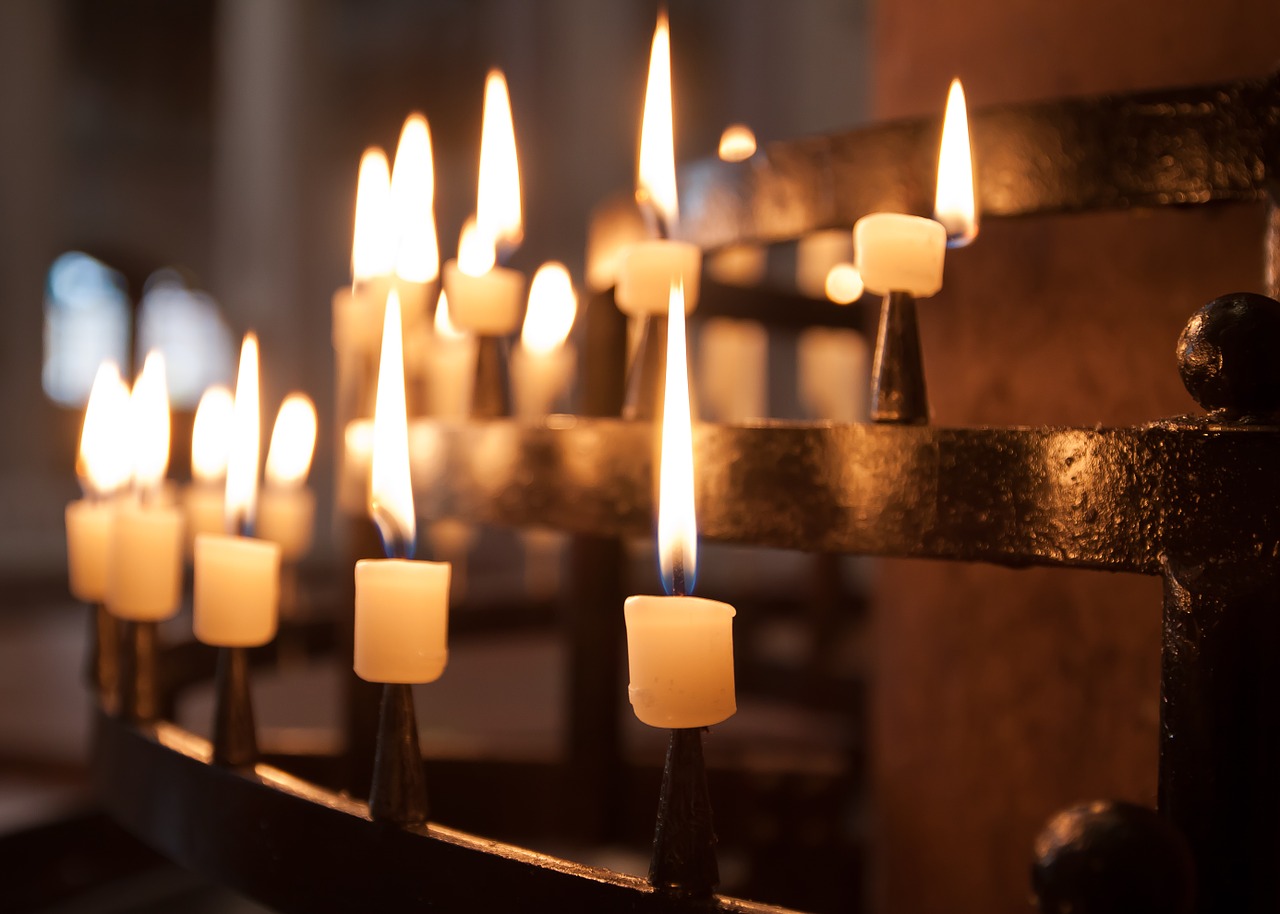Answered by Legionary of Christ Father Edward McNamara, professor of liturgy and dean of theology at the Regina Apostolorum university.
A: The 12 consecration crosses or stones and candles mentioned by our reader are usually located around the walls of any consecrated Catholic church. These crosses are usually of stone or some other durable material; occasionally they are painted. These crosses and candles mark the 12 points where the church walls were solemnly anointed with sacred chrism and the candles were lit for the first time. In older churches there are also 12 crosses on the exterior walls of the building.
This term dedication of the church is now preferred to consecration. It is described in the Rite of the Dedication of a Church:
“Rites of Anointing, Incensing, Covering, and Lighting the Altar
“16. The rites of anointing, incensing, covering, and lighting the altar express in visible signs several aspects of the invisible work that the Lord accomplishes through the Church in its celebration of the divine mysteries, especially the eucharist.
“a) Anointing of the altar and the walls of the church: The anointing with chrism makes the altar a symbol of Christ, who, before all others, is and is called ‘The Anointed One’; for the Father anointed him with the Holy Spirit and constituted him the High Priest so that on the altar of his body he might offer the sacrifice of his life for the salvation of all. The anointing of the church signifies that it is given over entirely and perpetually to Christian worship. In keeping with liturgical tradition, there are twelve anointings, or, where it is more convenient, four, as a symbol that the church is an image of the holy city of Jerusalem.
“b) Incense is burned on the altar to signify that Christ’s sacrifice, there perpetuated in mystery, ascends to God as an odor of sweetness and also to signify that the people’s prayers rise up pleasing and acceptable, reaching the throne of God. The incensation of the nave of the church indicates that the dedication makes it a house of prayer, but the people of God are incensed first, because they are the living temple in which each fanciful member is a spiritual altar.
“c) The covering of the altar indicates that the Christian altar is the altar of the eucharistic sacrifice and the table of the Lord; around it priests and people, by one and the same rite but with a difference of function, celebrate the memorial of Christ’s death and resurrection and partake of his supper. For this reason the altar is prepared as the table of the sacrificial banquet and adorned as for a feast. Thus the dressing of the altar clearly signifies that it is the Lord’s table at which all God’s people joyously meet to be refreshed with divine food, namely, the body and blood of Christ sacrificed.
“d) The lighting of the altar, which is followed by the lighting of the church, reminds us that Christ is ‘a light to enlighten the nations’; his brightness shines out in the Church and through it in the whole human family.”
The prayer used on this occasions is: “We now anoint this altar and this building. May God in his power make them holy, visible signs of the mystery of Christ and His Church.”
The 12 candles stem from the symbolic use of this number in biblical tradition. The 12 stones used by Moses to build the altar of the covenant represented the 12 tribes of Israel. There are the 12 gates of the new Jerusalem mentioned in the Book of Revelation (21:12-14). Likewise, there are the 12 apostles. When we say the Creed we confess that “We believe in one holy catholic and apostolic Church.” Our faith is “apostolic” because it is based on the teachings of Jesus, carried on by the apostles, the direct successors of whom are our bishops, guided by the Holy Spirit.
The rite of dedication of a church probably originates from the time of the Emperor Constantine (272-337) when Christians received freedom of worship. For many centuries it consisted of the first solemn celebration of the Eucharist. At a later stage a rite of placing relics was added. The nucleus of the present rite with the different anointings originated in the Middle Ages.
Our reader mentions the date of May 29 as the date of celebration of the dedication. This would be in virtue of the general norm that when the date of dedication of churches is unknown, each diocese celebrates the dedication of these churches on a common date. In his diocese this is the date chosen.
There are other systems in practice to resolve this difficulty. For example, the norms issued by the liturgy office of the bishops’ conference of England and Wales says:
“Every parish should celebrate as a Solemnity its patronal feast (who it is dedicated to) and the Anniversary of its Dedication.
“Parishes dedicated to Our Lady, where the title is not in the Calendar, celebrate the patronal feast on August 15 or on another Marian feast which fits in better with the particular title.
“The Anniversary is celebrated on:
“–: the anniversary of the date of dedication.
“– the nearest Sunday to the dedication where that Sunday either falls in Christmas or Ordinary Time (i.e. not Advent, Lent or Easter).
“– where the date is unknown on the Sunday before the Solemnity of All Saints (November 1).”
* * *
Readers may send questions to zenit.liturgy@gmail.com. Please put the word “Liturgy” in the subject field. The text should include your initials, your city and your state, province or country. Father McNamara can only answer a small selection of the great number of questions that arrive.



